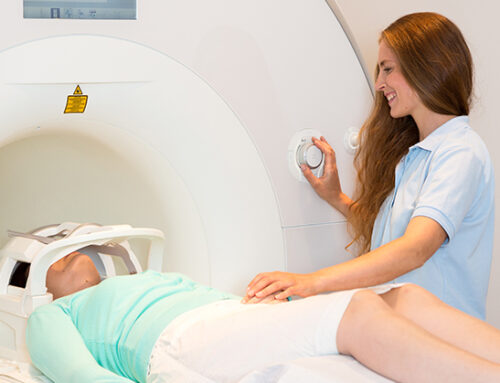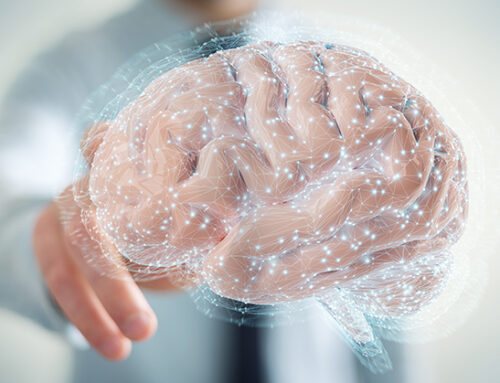Before astronauts are allowed to travel to Mars, scientists say they need to understand the impact of extended space flight on the body.
Up until now, few men or women have remained in space long enough to know how the body would respond to a journey of nine months or longer.
But a new study has come up with some important indicators. These show, at least as far as the brain is concerned, space travel is not all sweetness and light. In fact, the changes that happen within the body, and especially the brain, could one day help researchers understand the development of dementia as well as lead to new treatments.
Microgravity is Like Standing on Your Hands
Astronauts in space experience microgravity, or weightlessness, since they’re away from the gravitational pull people experience living on Earth. The health effects of living in microgravity seem to be all bad news, as the research shows it weakens bones, lowers muscle mass, reduces weight and causes fatigue.
Fortunately, these are all short-term effects and can be reversed when astronauts return to Earth. However, there are long-term health problems as well. One is that astronauts are at a greater risk of heart disease. Another problem relates to changes in vision.
Apparently spending extensive periods in space swells the optic nerve, and causes retinal bleeding as well as structural changes to the eye. These visual changes can persist for years after astronauts return.
Dr. Larry Kramer from the University of Texas has a hypothesis on why this happens: “When you’re in microgravity, fluid such as your venous blood no longer pools toward your lower extremities but redistributes headward.
“That movement of fluid toward your head may be one of the mechanisms causing changes we are observing in the eye and intracranial compartment.
“It’s not something that we normally experience on Earth unless you’re sort of standing on your hands.”
Then there are the changes microgravity causes within the brain.
Microgravity Causes the Brain to Swell
Dr. Kramer and his research team scanned the brains of 11 astronauts at different points in time; before space travel, the day after they returned and then at regular intervals up to a year later.
What they could see on the scans was swelling of the astronauts’ brains. The cerebrospinal fluid (CSF), which flows in and around the hollow spaces of the brain and spinal cord, also increased in volume. Even a year after return to Earth, both remained expanded. These effects could potentially elevate intracranial pressure – pressure inside the skull.
“What we identified, that no one has really identified before, is that there is a significant increase of volume in the brain’s white matter from pre-flight to post-flight,” reports Dr. Kramer. “White matter expansion in fact is responsible for the largest increase in combined brain and cerebrospinal fluid volumes post-flight.”
It will be interesting to see if any of these astronauts develop cognitive decline or dementia as they age. That’s because much of the latest research points to white matter degeneration as an early marker of Alzheimer’s disease.
Researchers from Columbia University recently reported that Alzheimer’s disease impacts the brain’s white matter before impacting grey matter with the development of amyloid plaques and neurofibrillary tangles.
What’s more, white matter changes have also been associated with a decline in motor function and fine motor coordination.
The Pituitary Gland Shrinks
These studies also showed that the pituitary gland at the base of the skull, which governs the function of many other hormone-secreting glands, flattened and shrunk. This is consistent with elevated intracranial pressure.
The spaces in the brain that carry CSF, called the lateral ventricles, also expanded and the fluid flowed faster.
Enlarged ventricles are seen in normal pressure hydrocephalus (NPH), a condition in which patients develop a shuffling gait, forgetfulness and confusion. It’s treatable, but is commonly misdiagnosed as Alzheimer’s.
Dr. Kramer said that focusing research into why the astronauts’ ventricles are enlarged in microgravity could improve understanding of the mechanisms involved in NPH. Perhaps one day, even Alzheimer’s.
Meanwhile, scientists now need to find ways to mitigate the intracranial effects of microgravity.
One option is to spin the astronauts in a chair for part of the day to move the blood back towards the legs. Another is a specialized suit for the lower half of the body to counteract fluid heading upwards.
Mars, Shmars
The whole business outlined here does not bode well for a Mars mission, now in the works among private companies and NASA, too. I’ve sometimes wondered why some people see a colony on Mars – a truly horrible environment as far as humans are concerned – as an attractive alternative to a few degrees of climate warming on earth.
The latter will be unpleasant for some people, for sure, but nothing the human race can’t adapt to. One thing that’s frequently missed is that vast amounts of nearly uninhabitable earth – Siberia and northern Canada, for example – will become quite attractive, and these actually comprise a huge part of the earth’s land area.
But I digress. I’m all in favor of a short term Mars visit if it can be done safely. But until the issues raised in this article are resolved, it will have to wait. Of course, since the earliest trip isn’t predicted until at least 2037, scientists have plenty of time to come up with some answers—and hopefully new and better treatments for patients with NPH, Alzheimer’s and other cognitive disorders.
- https://www.ncbi.nlm.nih.gov/pubmed/32286194
- https://www.uth.edu/news/story.htm?id=8b08a036-4168-4e37-9ee4-f4b696ef00bf
- https://www.space.com/brain-changes-in-space-astronaut-health-study.html
- https://www.ncbi.nlm.nih.gov/pmc/articles/PMC5834839/
- https://www.ncbi.nlm.nih.gov/pmc/articles/PMC6406891/







